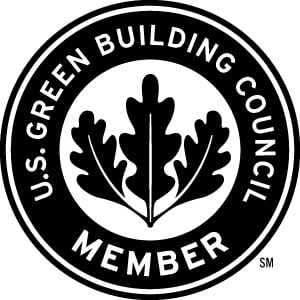 Sustainable building has moved from a feel-good ‘green dream’ to the top of the list of best practices for the building, operations and real estate development community.
Sustainable building has moved from a feel-good ‘green dream’ to the top of the list of best practices for the building, operations and real estate development community.
This week marks the first Midwestern conference of the U.S. Green Building Council (USGBC). One thousand architects, builders and planners from 14 states will learn more about sustainable design, construction and building operation.
Every industry has its jargon, and sustainable building is nuanced and sometimes complex. To an outsider, its vocabulary may seem like alphabet soup.
Whether or not you meet a “Greening the Heartland” conventioneer this week, it’s nice to understand sustainable building .Here are a few green building terms and their meanings:
LEED accreditation versus LEED certification—People are accredited, buildings are certified. Leadership in Energy and Environmental Design (LEED) oversees best sustainable building practices under the USGBC. Professionals who take specialized classes administered by the Green Building Certification Institute (GBCI) can achieve LEED-AP (Advanced Professional) status. Buildings that meet LEED criteria regarding use of recycled materials, sustainable building practices and green features obtain LEED certification.
LEED Silver, Gold and Platinum— Regardless of the certification level, to be on the LEED podium means you have built or remodeled an energy-saving facility.
LEED certifications are based on a 100-point system: the more points you garner, the higher the designation.
Each green feature included in a building contributes to LEED points, with some features leading to more points than others. High-efficiency windows and “cool” white roofs, for example, are commonly used at all LEED levels. Green roofs, bioswales and geothermal heating and cooling contribute toward more points because they have a greater environmental impact.
Green roofs feature plants grown on reinforced roofs. They insulate buildings, and plants provide clean air for us as well.
Building owners must consider life-cycle costs when going for LEED: the extra cost to achieve Platinum certification can be offset by energy savings or other ongoing cost reductions that shorten the payback of additional costs to achieve that certification level.
Heat Island Effect— Gilligan may have felt this, but we in the real world feel it, too. Heat island effect is increased temperatures from the absorption of heat by hardscapes like dark, non-reflective pavement and buildings. To reflect heat and cool the environment and buildings, we use white-colored roofs or “green” roofs.
Remediation— This is not what happens when your third grader takes a reading class over the summer. In the sustainable building world, remediation is fixing environmental hazards in a building or site so it can be safely redeveloped. Many older buildings were built with asbestos insulation, or the interiors painted with lead paint. Soils may be contaminated with chemicals that need to be extracted. Successful remediation ensures that the building is safe for humans to live or work there.
The more we learn about sustainable building to help us conserve natural resources and decrease energy use, the more we save on utilities as well as provide a better environment for our ourselves and our children.
